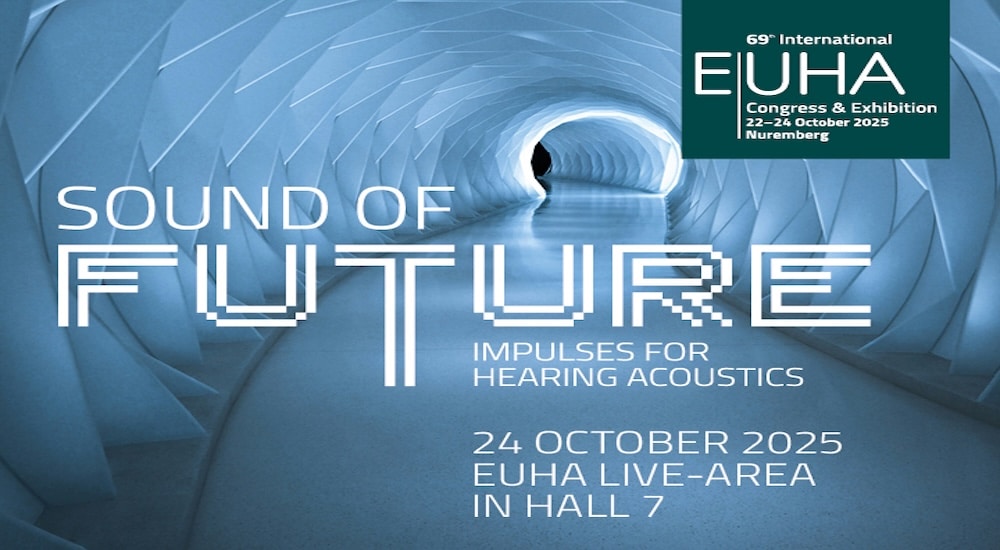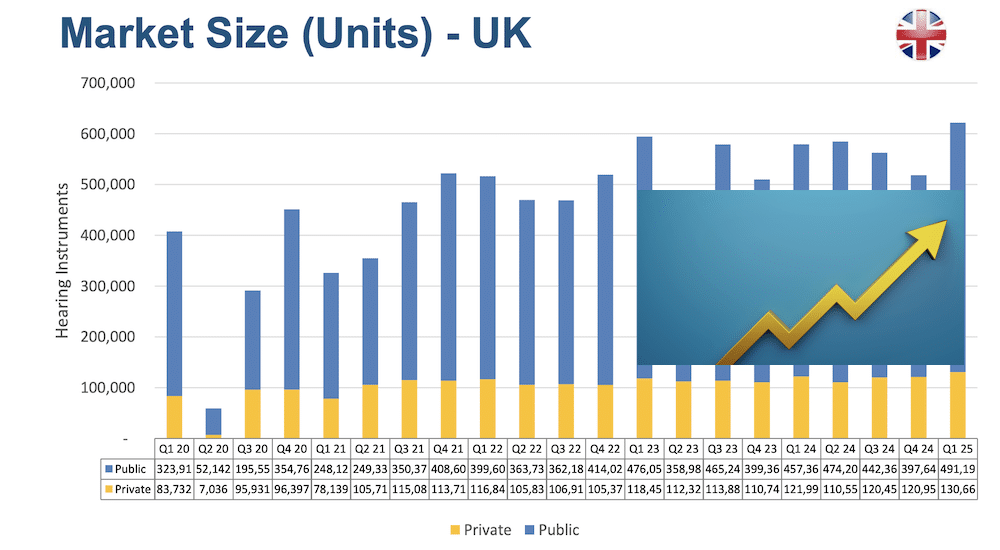EuroTrak UK: people wish they had hearing instruments sooner
Eurotrak 2018
Hearing aids are not only good for hearing loss, but contribute to better and more active lives, better quality of life and better overall health.

71% of wearers wish they obtained a hearing instrument sooner as they now realise how much they have been missing out.
Now in its fourth year, EuroTrak UK data is showingan interesting picture of hearing loss prevalence,adoption rate and satisfaction with hearingaids. There are some great messages for theprofession such as better quality of sleep, satisfaction aboutimproved quality of life, the fact that people with hearing aidsare not teased, but that hearing-impaired people withouthearing aids are more likely to be teased. The latest resultsalso confirm that people with hearing aids are less at risk ofdeveloping depressive symptoms, and are less “worn out” inthe evenings, physically and mentally. 71% of all hearing aidowners think they should have obtained their hearing aidssooner. They now have better social lives, improved mentaland emotional health, they perform better at work and areless tired in the evening.
As with the previous surveys, EuroTrak UK 2018 wasdesigned and executed by the Anovum market researchagency in Zurich, Switzerland, on behalf of the EuropeanHearing Instrument ManufacturersAssociation (EHIMA). Step onein the process was gettingapproximately 15,000 responsesto assess the prevalence of hearingloss and hearing aid ownership.The next stage involved detailedquestions of the target groups ofthe hearing impaired with hearingaids and the non-adopters.
The 2018 EuroTrak UK representative sample is14,855 people, of whom 1,300 had impaired hearing.Of these, 698 were hearing aid owners and 602 hearingimpaired non-owners. The survey indicates a hearing lossprevalence of 9.7% in the UK. The rate of adoption of hearingaids in the UK continues to rise. It was 42.4% in 2015,41.1% in 2012 and 38.6% in 2009, it is now 47.6%, whichcontinues to be amongst the highest in the world. The binauralrate for 2018 is 61% (61% in 2015; 54% in 2012 and 47%in 2009).
34% have had a hearing test in the last 5 years. Doctors andhearing aid dispensers are the most important sources ofinformation and therefore gatekeepers for people to gatherinformation about hearing aids. Pleasingly, the drop-outrates throughout the process are decreasing! Of those whobelieve they have a hearing loss, 72%visited their GP or an ENT doctor. Of theGP consultations, only 9% recommendedno further action; 41% were sent to anaudiologist and 50% to an ENT. 66%believe that the over 55s should havetheir hearing tested every year and 75%believe the family doctor should perform ashort screen when they attend for medicalcheck-ups.
It is taking people, on average, threeyears between becoming awareof their hearing loss and obtaininghearing aids.74% of the 2018 wearers ownhearing instruments that were fittedin 2015 or later and the averageage of currently used hearing aidsis 2.3 years. The overall lifetimeof hearing aids is typically 4 yearsbefore owners replace or upgrade.In that time, 31% will have hada repair. 75% of those surveyed received their hearinginstrument from the NHS, down from 83% in 2012.Only 22% of UK hearing aid owners are aware of their hearingaid brand. 15% of owners use an accessory such as a TVstreamer,App or remote control. Of those, 77% are satisfiedwith it.
Most people get satisfaction
Overall satisfaction with hearing aids is 74%, lower thanFrance or Germany. Satisfaction is greater the longer thehearing aid is worn each day. UK wearers use their hearingaids on average for 7.8 hours a day (lower than France orGerman). Satisfaction jumps to 90% for those that wear theirhearing instruments for more than 8 hours a day. 85% believetheir hearing aids work better than or as expected.Good news for hearing aid owners and manufacturers isthe positive satisfaction trend across all listening situations.Hearing aid performance in all listening situations hasimproved, from a 5% increase in satisfaction in one-to-oneconversations to a 14% increase in satisfaction of hearing aidperformance in noisy situations.
The survey results do show the positive impact of hearingaids on quality of life. Communication effectiveness andparticipating in group activities, social life and confidenceimprove significantly for hearing aid wearers and the greaterthe loss, the more impactful the hearing aid is. 94% of hearingaid owners declare that their hearing aids improve their qualityof life at least sometimes. 2 out of 3 hearing aid owners feelmore confident moving in a city since wearing their hearinginstruments.
Hearing aids improve more than justyour hearing
87% of working hearing aid owners state that their hearingaids are useful for their job (81% in 2015). They alsobelieve that hearing aids increase the chance of themgetting promoted, being in the right job and getting ahigher salary compared to those hearing-impaired peoplewho have not obtained hearing aids.When looking at general health, hearing aid ownershave a lower risk of being depressed (PHQ-2 Screening)compared to impaired non-owners with comparablehearing loss.
Hearing aid wearers feel less physically and mentallyexhausted in the evenings compared to hearing impairedpeople who do not have hearing aids. 56% were alsohappy with their quality of sleep, compared to 41% ofpeople with no hearing aids.
Hearing aid owners don’t believe people make fun ofor reject them because of their hearing aids. It is morelikely somebody makes fun or rejects a hearing-impairedperson who doesn’t use a hearing aid. 73% of the hearing impairedpopulation who do not own hearing aids havebeen teased about their hearing loss, 37% say it happensregularly. For people wearing hearing aids only 5% saidthey were regularly teased. 71% said they were nevermade fun of when wearing their hearing instruments.The hearing care professional is the biggest influencerin people agreeing to hearing instruments. The 2018EuroTrak provides some very useful messaging and foodfor thought for the profession.
Article written from the data of the EuroTrak UK survey2018, completed by Anovum for EHIMA (European HearingInstrument Manufacturers’ Association)


